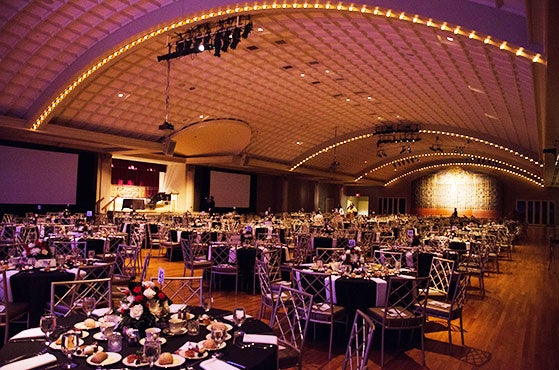This past weekend, as with many of my weekends, was action packed. Saturday morning, I gave my monthly Findlay Market Tour, checked out City Flea at Washington Park and bought a couple of items, had lunch, and then, went inside Music Hall and took the SPMH Backstage and Beyond tour.
Back in November 2017 in the midst of Music Hall's renovation, I had the honor of working through a local temp agency on a project to help recatalogue thousands of pieces of music for the music library. After the project ended, all of the temps had the honor of taking an exclusive tour of Music Hall. For this blog, I wanted to refresh my memory of the rich history of this Cincinnati icon.
Ron, my tour guide for this past weekend, was super knowledgeable about the legacy of Music Hall. This is the home of the Cincinnati Symphony Orchestra, Cincinnati Pops Orchestra, Cincinnati Opera, and the Cincinnati Ballet, and the Cincinnati May Festival Chorus. Designed by Samuel Hannaford, it first opened in 1878 and has been used for musical performances and as an industrial exhibition hall. This was also built over a pauper's cemetery and, per the Travel Channel, it is listed as one of the most haunted places in the United States.

What very few people know that Music Hall has a super rich African American heritage. Back in the 1920s, The Music Hall ballroom served as two nightclubs: the Topper Club for white patrons and the Graystone Club for African American patrons. As with many of the public places at the time, this was segregated; Topper Club patrons used the Elm Street entrance and the Graystone Ballroom patrons entered using the Central Parkway entrance. Among the African American performers who performed at the Graystone were Cab Calloway and his Cotton Club Band, Ella Fitzgerald, Fats Domino, B.B. King, Sarah Vaughn, and Miles Davis (P.S. & BTW, the audition scene of the Davis biopic Miles Ahead was filmed in Springer Auditorium!).
Here's another little known fact: according to the Mansfield News-Journal, on April 13, 1934, two men robbed the Greystone Ballroom of $3500.00 and locked two employees in the ante-room!
What's more, per Cincinnati's Colored Citizens by Wendell P. Dabney, there were two African American organists who were among the first to play the organ at Music Hall; Charles E Trotter, who was an organist for Union Baptist Church, Cincinnati's oldest African American Church, for 30 years and toured the state of Ohio in organ recitals and local physician Dr. C.F. Buckner, who was known to be among the first doctors to use magnetism in medical practice and also served in the Black Brigade.
Fast forward...This is also home to Classical Roots and Opera Goes to Church, both which collaborates with local black churches, choirs, and musicians to perform in black churches and infuses opera, classical, spirituals, and jazz to deliver one of a kind performances.
Blessings and Happy Monday to all!
What's more, per Cincinnati's Colored Citizens by Wendell P. Dabney, there were two African American organists who were among the first to play the organ at Music Hall; Charles E Trotter, who was an organist for Union Baptist Church, Cincinnati's oldest African American Church, for 30 years and toured the state of Ohio in organ recitals and local physician Dr. C.F. Buckner, who was known to be among the first doctors to use magnetism in medical practice and also served in the Black Brigade.
Fast forward...This is also home to Classical Roots and Opera Goes to Church, both which collaborates with local black churches, choirs, and musicians to perform in black churches and infuses opera, classical, spirituals, and jazz to deliver one of a kind performances.
Blessings and Happy Monday to all!

No comments:
Post a Comment